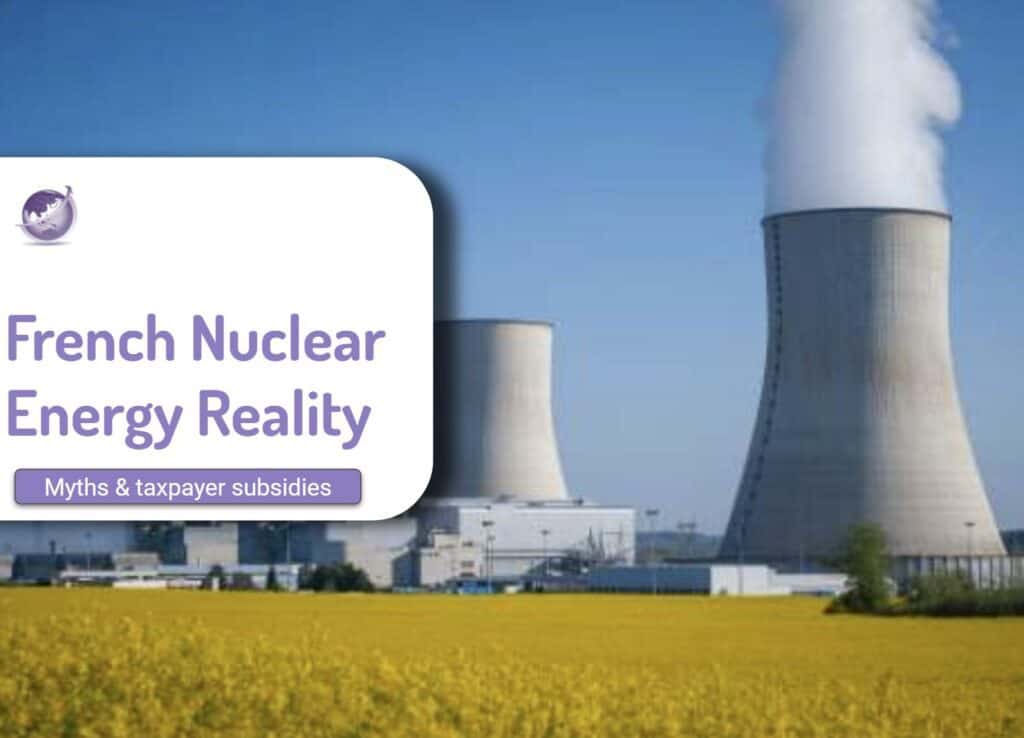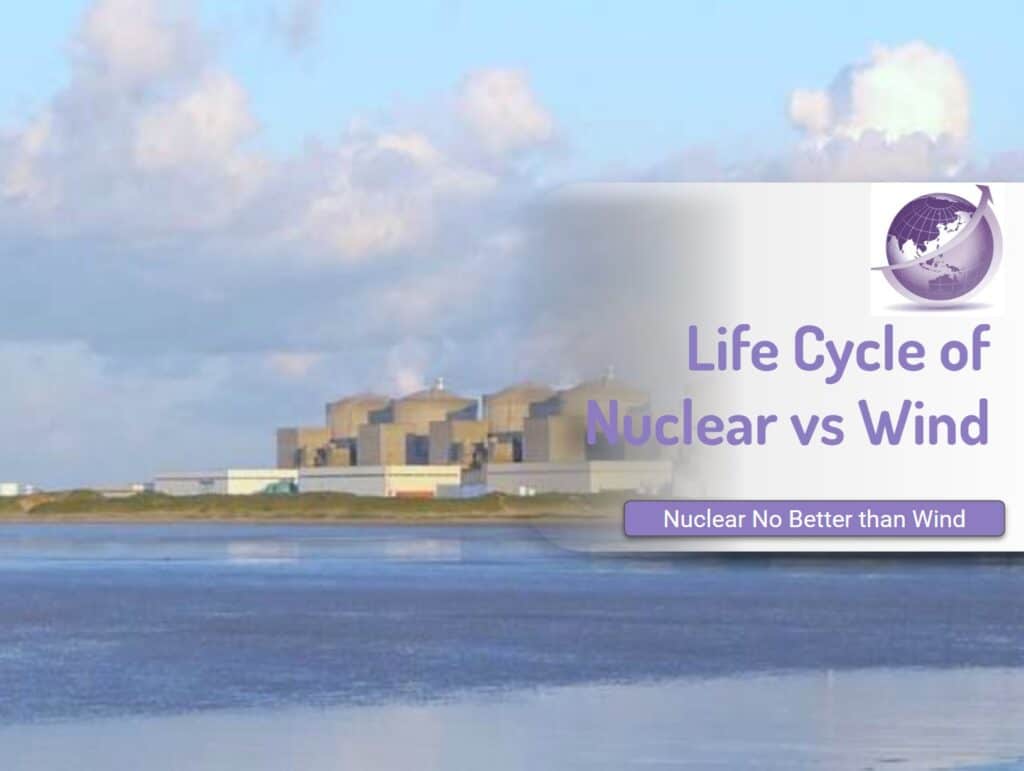The size of nuclear power subsidies is enormous and ultimately paid for by taxpayers around the world. In the discussion about renewable energy there are many nuclear myths. There are about 440 nuclear power plants in the world.
USA Nuclear Power Subsidies
- The Biden administration is pushing lawmakers to support a $4.3 billion plan to buy enriched uranium directly from domestic producers to wean the US off Russian imports of the nuclear-reactor fuel (Mining.com). The proposal aims to spur the development of more domestic enrichment and other steps needed to turn uranium into reactor fuel. It would create a government buyer directly purchasing enriched uranium, including the type used in a new breed of advanced reactors now under development. Russia accounted for 16.5% of the uranium imported into the US in 2020 and 23% of the enriched uranium needed to power US commercial nuclear reactors and the recent war in Ukraine poses a risk to USA imports.
- Tapping into $6 billion in subsidies passed as part of the Bipartisan Infrastructure Law, the Department of Energy launched a program in May 2022 to bail out the owners and operators of money-losing nuclear power plants. The bailout represents the largest federal investment aimed at saving financially distressed nuclear reactors in United States history.
- The General Accounting Office (GAO) estimates the total cleanup cost for the radioactive contamination incurred by developing and producing these weapons at a staggering $494 billion.
- Cleaning up Hanford has already cost taxpayers $170 billion over 30 years, but government auditors say the most challenging parts of the clean-up work are yet to be done.
- Capital cost to build. New $41B got nuclear plant of 3GW capacity. The same $41b has provided 24.6GW of wind in Europe, but built per year! Not 15 years
The Vogtle Plant in Georgia Getting Worse
Southern Company’s two new reactors (2.2GW) in Plant Vogtle in Waynesboro, Georgia have been under construction since 2013. The cost is now $28.5 Billion which is double the original but forecast to be >$30.4b. Originally due in 2016, it is 7 years behind schedule and now due in 2024. The US Govt has $12B in loan guarantees. The price of electricity is expected to be between $112 and $189. The Georgia Govt allowed $2.1 billion of the extra build costs to be billed directly to customers, increasing their power bills by $3.78 per month.
In Feb 2023, more bad news. Unit 3 now starts in mid 2023, and unit 4 in 2024, with a further $200m write down. (Georgia Power)
In March 2023, they announced the start of super criticality – first signs of life,
Subsidies To Stay Open
- In March 2023, the Biden admin offers $1.2 bln for distressed or shut nuclear plants (Reuters).
- Funding comes from the $6 billion Civil Nuclear Credit program, created by the 2021 infrastructure law, and will be distributed by the Department of Energy (DOE).
- Last year, the DOE provided $1.1 billion in conditional CNC funding to Pacific Gas & Electric’s Diablo Canyon nuclear plant that had been set to fully shut in 2025.
UK Subsidies
Hinkley C Build Projections
| Year | Capital Cost £ billion | Year Finished | Stripe Price £/MWh | UK Average Wholesale Price £ |
|---|---|---|---|---|
| 2007 – Planned | 8 | 92.50 | 100 | |
| 2013 Negotiations with EDF | 50 | |||
| 2017 – Started | 14 | 2025 | 120 | |
| 2023 – Roof on (BBC Report) | 33 | 2028 | 150 | 70 |
- The £163 billion problem of how to safely dispose of vast volumes of radioactive waste created by the last British atomic energy program remains unsolved.(see The Guardian).
- The most updated figure UK is spending $3bn/year, for 100+ years, to decommission nuclear plants – with no waste storage plan!

France Nuclear Power Subsidies
- France is often put up as where nuclear is successful with their 59 reactors with 72% of their power coming from nuclear, but there are myths. read more here.
- France subsidies its power through the ARENH scheme and also price caps on electricity bills. The costs are borne in the taxpayers tax bill. The numbers are mind-blowing and this isn’t even the debt that EDF accumulated. E.g.
- The French state owns 84% of EDF’s shares. The group forecast last week show the government decision would knock around 8 billion euros ($9.13 billion) off its 2022 core earnings before interest, taxes, depreciation and amortization.
- The French government is to inject about €2.1bn (£1.75bn) into the state-controlled energy group EDF to ease the financial pain inflicted by nuclear reactors going offline and the state making the firm supply power below market prices. The cost of failures was an estimated €19bn downgrade off its forecast core profits in 2022.
- In 2022, the Finance minister said energy price rises are to be capped at 15% in the budget where the French government plans to spend €45bn shielding households and businesses from energy price shocks in a budget focused on bringing down inflation. Refer to https://www.eceee.org/all-news/news/france-announces-45bn-effort-to-shield-country-from-energy-cost-increases/
- Total EDF debt appears to be ~€65 billion. (EDF Annual report 2022 https://www.edf.fr/sites/groupe/files/2023-02/annual-results-2022-pr-en-2023-02-17.pdf)
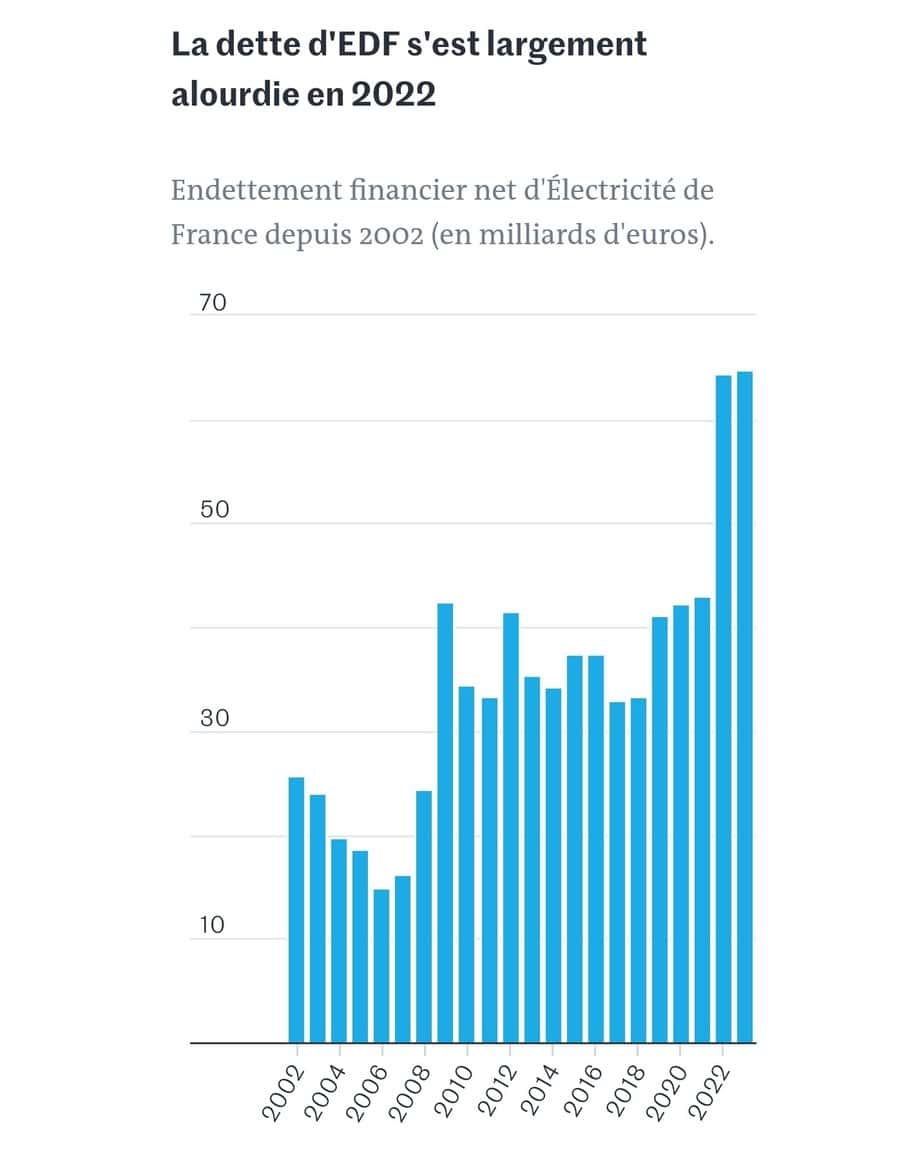
China
- In 2020, China has 47 operational nuclear power units and 11 nuclear power units under construction. Planned nuclear is as high as 228 plants. Nuclear power accounted for 4.88% of the total electricity mix in 2019, and expected to grow to about 10%.
- Nuclear power plants are all funded by the CCP. An estimate is that the government subsidy of is 0.4 yuan/kWh ($60/MWhr)
Finland Nuclear Power Subsidies
- Finland has five operating nuclear reactors, with 1 reactor planned, to take the nuclear contribution to about 60% of electricity and replace coal.
- The mix of power in Finland nuclear is 23.3 TWh (34%); hydro 15.9 TWh (23%); biofuels & waste 11.9 TWh (17%); wind 7.9 TWh (11%); coal 5.5 TWh (8%); natural gas 3.7 TWh (5%); oil 0.3 TWh; solar 0.3 TWh.
- Finland’s construction is typical of nuclear plants and beset with cost overruns and delays. E.g. Construction of Olkiluoto 3 started in 2005. Completion date blew out from 2009 to late 2021. 12 years late. However, after producing electricity for about a week, it had to shut down for another 3 months. Then, after ramping up to about 30% of the capacity, it encountered another problem, delaying it for another 5 months. In June 2022, 17 years later, Olkiluoto 3 provides exactly 0 MW to the Finnish grid
- In Finland, the wholesale cost of power has been about €50 /MWh for the past decade, but increased over past 2 years to over $100 /MWhr. Spikes have been as high as €400, and at peak times to €10,000 due to with poor rainfall, import of power and gas from Russia, and strong demand.
- Waste disposal cost exceeds €2.3b. Cost is direct from general funding.
UAE
- UAE have built four NPPs that may end up producing at $80/MWh ($0.08kWh)
- Unfortunately, UAE is also building large scale PV that will be producing at $13 MWh ($0.013/kWh.). And since they’re still burning gas for most of their power, every kWh from solar goes straight to reducing the overall cost and CO2 emission, five times cheaper than the NPPs will. “
Canada
Many say that Ontario in Canada nuclear is an example of cheap emissions-free power. Ontario’s budget for reducing electricity prices exceeds spending on long-term care and is in excess if $6b per year (CBC News), up 4 times from 2018. The subsidies knock $50 off the average monthly residential hydro bill. Without the subsidies, the typical household would pay $171 a month (including tax) for electricity. Instead, the average hydro customer’s monthly bill is $121. Ontario (2019) zero-carbon sources exceeds 92%
- Nuclear=59%
- Hydro=24%
- Wind=8%
- Solar=1%
Much of the subsidy goes to businesses, including smelters. How much is from previous green energy projects and how much from subsidizing nuclear is murky.
Nuclear vs Gas vs Wind Power Comparison from UK

Other Countries
Pakistan, India and Russia’s electricity generation aligns integrally with their weapons strategies.


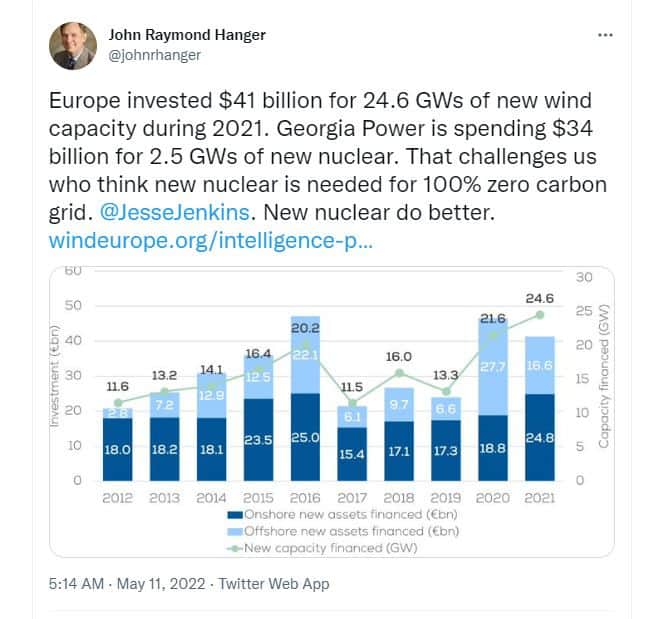
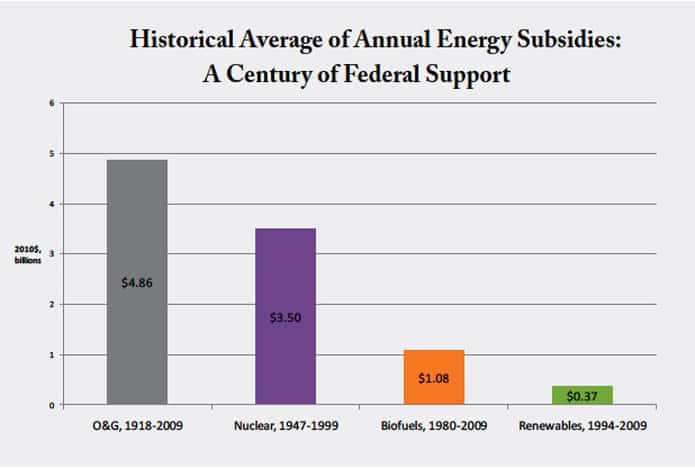
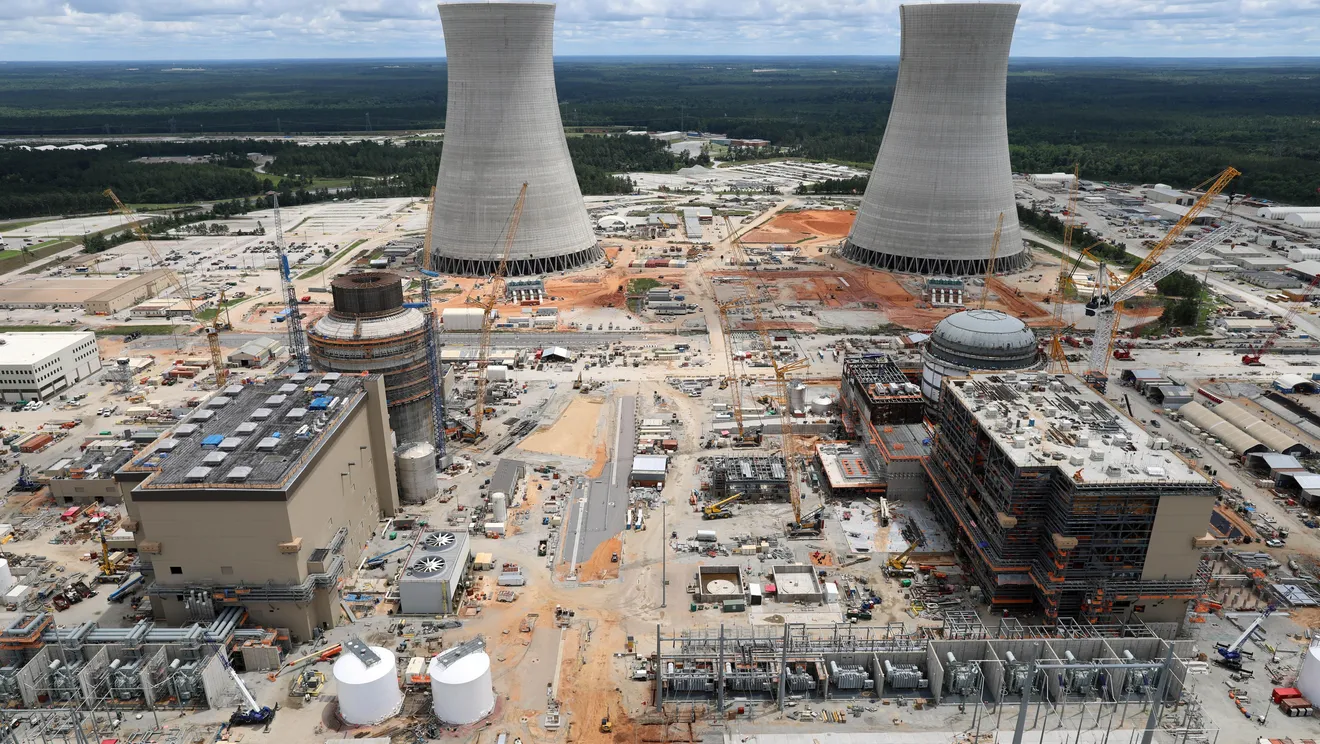

Sovereignty








